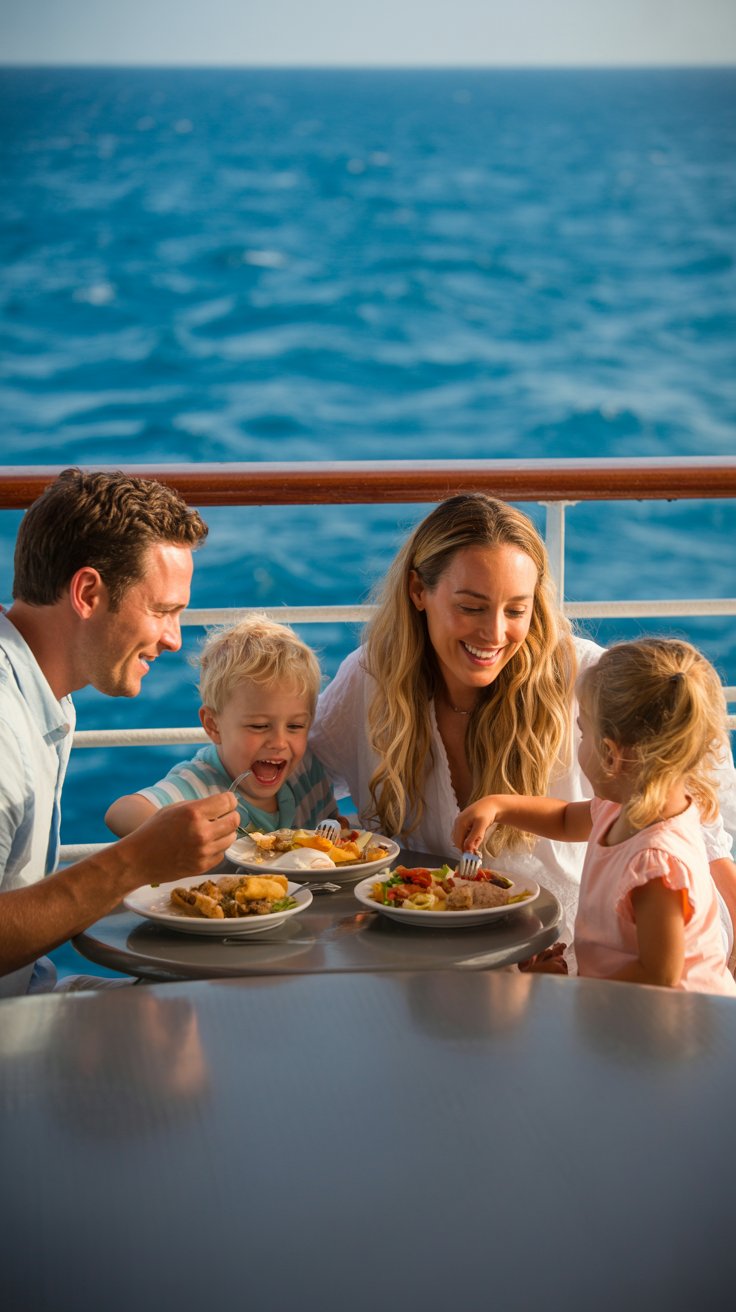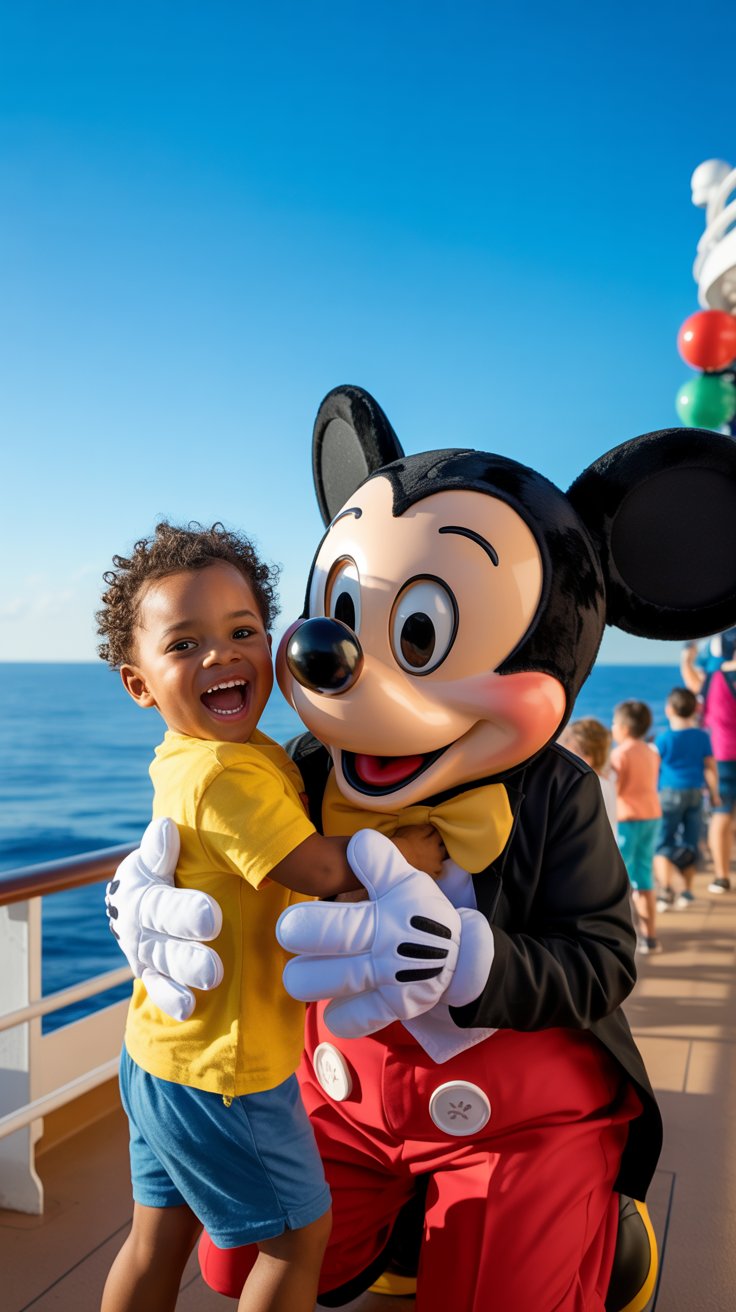After decades of sailing with families from toddlers barely walking to teenagers trying their best to look bored, I’ve learned that family cruising is both an art and a science. The good news? Once you crack the code, it becomes one of the most rewarding ways to vacation together. The challenging news? There’s definitely a code to crack.
Choosing Your Floating Paradise
Not all cruise ships are created equal when it comes to families. The mega-ships from Royal Caribbean, Norwegian, and Carnival often steal the spotlight with their flashy amenities, but here’s an insider secret: mid-sized ships can offer better value and less overwhelming experiences for families with younger children. Lines like Princess and Holland America might seem “too adult,” but their newer ships have significantly upped their family game.
When selecting your vessel, pay attention to the crew-to-guest ratio rather than just the ship’s size. A higher ratio means better service in the kids’ clubs, faster room service, and staff who actually remember your child’s name by day three. Ships with ratios better than 1:3 are golden for families.
If you’re considering Mediterranean family cruises, you’ll find these regions offer incredible educational opportunities alongside family fun. Many ships visiting ports like Genoa offer easy access to stunning destinations like Portofino, perfect for creating lasting family memories.
👉 Shore Excursions for families fill up fast – book direct and save
Cabin Selection Strategy
Here’s what the cruise lines won’t tell you: interior cabins on family-friendly ships are often perfectly adequate because you’ll rarely be in your room. However, if you’re cruising with teens, splurge for a balcony. That private outdoor space becomes invaluable when someone needs a timeout (and let’s be honest, that someone might be you).
Connecting cabins sound ideal in theory, but the reality is those doors between rooms are about as soundproof as tissue paper. Family suites or junior suites with pull-out sofas often provide better space and privacy balance. Plus, many newer ships offer “virtual balconies” in interior rooms – large screens showing real-time ocean views that surprisingly don’t feel gimmicky after the first day.
For families traveling with five or more people, check out our guide to large family cruises which covers the best cabin configurations for bigger groups.
Sleep Logistics: The Reality Nobody Warns You About
Here’s the question that haunts every parent planning their first family cruise: when you’re sharing a balcony cabin with young children, can you actually stay up after their bedtime without sitting in complete darkness?
The short answer is… it’s complicated. Most cruise cabins do have blackout curtains, but they’re not exactly blackout-level black, and that balcony door isn’t helping your cause. You’ll get some ambient light filtering through, which means once the kids are down, you’re essentially choosing between reading by phone light or embracing your inner early bird.
Smart families have cracked this code in several ways: connecting rooms give parents their own space to decompress with a proper glass of wine, while family suites often feature separate sleeping areas that actually work.
The real insider secret? Many parents find out that syncing their sleep schedule with their children isn’t the vacation-ruining compromise they feared – there’s something surprisingly refreshing about going to bed at 9 PM and waking up genuinely rested. Plus, kids’ club evening activities and babysitting services extend your adult time beyond the cabin anyway.
Just don’t expect to recreate your home routine where you binge Netflix until midnight while the kids sleep peacefully in the next room.
Mastering the Art of Cruise Dining

Forget everything you think you know about cruise dining with kids. The buffet isn’t always your friend – it’s often crowded, overwhelming for little ones, and the food sits under heat lamps longer than anyone wants to admit. Instead, embrace room service for breakfast (usually free) and use the main dining room for dinner.
Here’s a game-changer: most cruise lines allow you to make special meal requests 24 hours in advance through guest services. Your picky eater can have plain pasta every night without the stress of buffet hunting. Many ships also offer “kids eat free” room service menus that aren’t widely advertised.
For special occasions, consider booking one of the ship’s specialty restaurants – many offer kid-friendly options and create memorable dining experiences for the whole family.
Shore Excursion Secrets
The cruise line’s shore excursions are convenient but often overpriced and underwhelming for families. That “cultural walking tour” will likely bore your 8-year-old to tears. Instead, research family-friendly independent options that offer more flexibility and often better value.
For Mediterranean cruises, ports like Portofino offer incredible family activities that you can easily arrange independently. Many families find day trips from Portofino to Cinque Terre provide better value than ship excursions.
👉 Shore Excursions for families fill up fast – book direct and save
However, don’t completely dismiss ship excursions for certain ports. In destinations where transportation is challenging or safety is a concern, the cruise line’s offerings provide peace of mind and guaranteed return times. Caribbean beach excursions, while pricey, often include amenities like floating toys and snorkel gear that would cost extra elsewhere.
Kids’ Club Intelligence
Every parent asks about kids’ clubs, but here’s what you really need to know: the best programs aren’t necessarily on the biggest ships. Smaller ships often have more personalized attention and creative programming. Before booking, check if the ship requires children to be potty-trained for certain age groups – some lines are stricter than others.
The secret sauce is the youth staff quality, which varies dramatically even within the same cruise line. Ships on longer itineraries often have more experienced youth counselors because the positions attract career-minded staff rather than seasonal workers.
Kids’ Club Age Groups by Major Cruise Lines:
- Royal Caribbean: 6-36 months, 3-5 years, 6-8 years, 9-11 years, 12-14 years, 15-17 years
- Norwegian: 6 months-2 years, 3-5 years, 6-9 years, 10-12 years, 13-17 years
- Carnival: 2-5 years, 6-8 years, 9-11 years, 12-14 years, 15-17 years
- Disney: 6 months-3 years, 3-4 years, 5-12 years, 11-14 years, 14-17 years
“The kids’ club on our Norwegian Escape cruise was incredible – my twins didn’t want to leave for meals! The counselors were so engaged and the activities were actually creative, not just movie time. Best parenting break I’ve had in years.” – Family cruise on Norwegian Escape
Timing Your Family Cruise
School holidays are obvious but expensive choices. Consider repositioning cruises in late April or early May – these longer itineraries often cost less per day than shorter cruises and offer unique ports. The trade-off is more sea days, which can be perfect for families who want to fully experience the ship’s amenities.
For Caribbean cruises, September and October offer incredible value, and hurricane disruptions are less common than fear-mongering suggests. Most modern ships can easily outrun weather, and cruise lines have generous rebooking policies for weather-related changes.
Our comprehensive guide to the best times for family cruises breaks down seasonal considerations, crowd levels, and pricing patterns to help you find the perfect sailing dates.
Packing Like a Pro
Cruise packing with kids requires strategic thinking. Bring a small power strip – cruise cabins never have enough outlets, and everyone needs to charge devices. Pack at least one formal outfit that can mix and match for different family members because formal nights are actually fun when you’re prepared.
Magnetic hooks and organizers are cruise cabin game-changers since most cabin walls are metal. Kids can easily access their belongings, and you’ll maximize limited storage space. Also, pack a small first-aid kit – the medical center charges premium prices for basic items like children’s Tylenol.
Don’t forget to check our detailed family cruise packing checklist to ensure you don’t miss any essentials for your sailing.
Managing Expectations and Reality
Not every moment will be magical. Your toddler will have a meltdown in the main dining room. Your teenager will complain about the wifi speed. Someone will get seasick despite your best preparations.
If you’re worried about teenagers enjoying the experience, our guide will teenagers enjoy cruising addresses common concerns and provides strategies for keeping older kids engaged.
👉 Shore Excursions for families fill up fast – book direct and save
The beauty of cruise vacations lies in their flexibility. When something isn’t working, you have dozens of other options within walking distance. Embrace the chaos, lower your Instagram-perfect expectations, and focus on the moments that work rather than stressing about the ones that don’t.
Cruise Line Comparison for Families

Choosing between major cruise lines can feel overwhelming. Here’s how the top family-friendly options compare:
| Cruise Line | Best For | Standout Features | Age Focus |
|---|---|---|---|
| Royal Caribbean | Adventure-seeking families | Water slides, rock climbing, surf simulators | All ages, especially 6-17 |
| Disney | Families with young children | Character experiences, exceptional kids’ clubs | Ages 3-12 (but all ages welcome) |
| Norwegian | Flexible families | Freestyle cruising, varied dining times | All ages |
| Carnival | Budget-conscious families | Fun atmosphere, good value | All ages, especially teens |
For a detailed comparison between two popular choices, read our Carnival vs Royal Caribbean for families analysis.
Budget Reality Check
Cruise sticker prices are deceiving – the real cost includes gratuities, drinks, specialty dining, excursions, wifi, and those adorable photo packages. A $500 per person cruise can easily double with extras. Plan for it upfront rather than experiencing bill shock at the end.
However, cruises still offer incredible value when you consider accommodation, meals, entertainment, and transportation are included. Compare the total cost to a land-based vacation with similar amenities – you’ll often find cruising wins, especially for larger families.
Understanding what’s included in family cruise packages helps you budget accurately and avoid unexpected expenses.
Regional Cruise Considerations

Different cruise regions offer unique advantages for families:
Caribbean Cruises
- Consistent weather year-round
- Short flight times from most US cities
- Excellent beaches and water activities
- Many English-speaking ports
Families particularly enjoy Bahamas family cruises for their convenience and beautiful beaches. Nassau offers plenty of family activities within walking distance of the port.
Mediterranean Cruises
- Rich cultural and historical experiences
- Diverse ports with unique character
- Educational opportunities
- Excellent cuisine
European ports like Athens offer incredible experiences for kids, combining history with hands-on learning opportunities.
European River Cruises
- Intimate ship atmosphere
- Multiple countries in one trip
- Cultural immersion
- Scenic sailing through historic regions
For families interested in river cruising, our European river cruises for families guide explains what to expect from this unique cruising style.
Common Questions
Can I bring my own life jackets for my kids?
Yes, and many parents prefer their own Coast Guard-approved jackets for muster drills and tender rides. The ship’s jackets are adequate but often uncomfortable for smaller children.
Do cruise ships have baby food and formula available?
Most ships carry basic baby supplies, but selection is limited and prices are high. Bring your own preferred brands, especially if your child has specific dietary needs or preferences.
What’s the real policy on bringing snacks and drinks onboard?
Most cruise lines allow sealed, packaged snacks in reasonable quantities. Water bottles and juice boxes are usually permitted. Alcohol policies vary significantly by cruise line, so check specific restrictions before packing.
How do I handle different meal times for kids versus adults?
Many families successfully use early dining for kids’ meals, then return for adult dining later. Room service and casual dining venues also provide flexibility for families with different schedules and appetites.
Special Considerations for First-Time Cruisers
If your family is new to cruising, start with shorter itineraries to test the waters. Three to five-day cruises allow you to experience cruise life without committing to a full week if someone struggles with seasickness or cabin fever.
Book excursions that offer variety – combine active adventures with cultural experiences. Many families find the best approach is mixing ship-organized tours with independent exploration, especially in ports with excellent infrastructure.
Entertainment and Activities
Modern cruise ships are floating entertainment complexes. Beyond the obvious pools and kids’ clubs, families can enjoy:
- Broadway-style productions (many ships offer family-friendly shows)
- Amazing water slides and aqua parks
- Rock climbing walls and mini-golf courses
- Science labs and educational programming
- Cooking classes designed for families
- Art auctions and gallery tours
The key is sampling different activities rather than trying to do everything. Some of the best family memories happen during unplanned moments – like discovering a quiet deck area perfect for card games or stumbling upon an impromptu dance party.
Bonus Tips That Will Change Your Cruise Game
- Book spa appointments during port days when prices are often lower and availability is better
- Attend the art auctions even if you’re not buying – they serve free champagne and provide cultural entertainment
- Use the launderette during dinner hours when it’s less crowded
- Embarkation day lunch at the buffet is usually the best quality since everything is fresh
- Pack a small cooler bag for shore excursions – perfect for keeping drinks cold and storing wet swimsuits
- Download the ship’s app before boarding to secure reservations and avoid onboard wifi costs for basic functions
- Bring magnetic clips for hanging wet clothes in your cabin
- Pack a small nightlight – cruise cabins can be very dark
- Consider bringing a portable phone charger for long port days
Family cruising isn’t just about finding a vacation that works for everyone – it’s about creating a shared adventure that becomes part of your family’s story. The teenager who rolls their eyes at embarkation will be the first one asking when you can cruise again. The toddler who seemed too young to appreciate it will be talking about the “big boat” for months afterward.
In a world where family time is increasingly fragmented, cruising offers something rare: a week where you’re all together, exploring new places, trying new things, and creating memories that last far beyond the tan lines. The ocean has a way of washing away daily stresses and leaving room for what really matters – each other.
